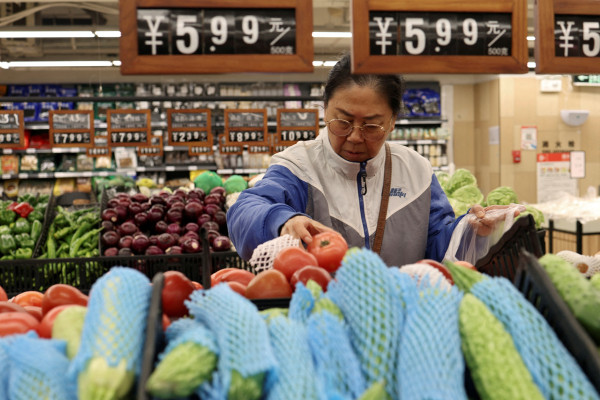
China’s factory output growth slowed in October and it was still too early to call a
turn in the crisis-hit property sector even though consumers perked up, keeping alive calls for Beijing to top-up its recent blitz of stimulus to revitalise the economy.
The burst of data is likely to maintain pressure on Chinese policymakers as they brace for the return to the White House of Donald Trump, who has vowed to hike tariffs on Chinese goods and named China hawks to his cabinet in a troubling sign for the world’s second-biggest economy.
October industrial output grew 5.3% from a year earlier, National Bureau of Statistics (NBS) data showed on Friday, slowing from September’s 5.4% pace and missing expectations for a 5.6% increase in a Reuters poll.
However, retail sales, a gauge of consumption, rose 4.8% in October, accelerating from the 3.2% pace in September and marking the quickest growth since February.
Retail growth was boosted by a week-long holiday and the annual Singles’ Day shopping festival, which kicked off on Oct. 14, ten days earlier than last year.
visiData provider Syntun estimated that sales across major e-commerce platforms rose 26.6% to 1.44 trillion yuan over the Singles Day event.
“China’s economy improved further at the start of Q4, thanks to stronger-than-expected consumer spending,” said Zichun Huang, China economist at Capital Economists.
“We think faster fiscal spending will support a continued cyclical pickup in activity over the coming months. But Trump’s victory casts a shadow over the outlook further ahead,” she
added.
NBS spokesperson Fu Linghui told a media briefing the recent policy measures appeared to be having a positive economic effect and that officials would continue to step up support.
“Changes in economic operations in September and October have strengthened China’s confidence in achieving its 2024 target for economic growth” of around 5%, he added.
However, some economists said it was too early to determine whether September’s latest tranche of policy support was sufficient to underpin a solid recovery.
“The stimulus impact should already be reflected in consumption, because the trade-in programme has been in place for a few months,” said Dan Wang, a Shanghai-based independent economist.
This meant “all the other more recent stimulus initiatives haven’t shown any impact, including earlier stimulus focused on housing,” she said.
The NBS said sales of home appliances surged 39.2% in October, driven by the consumer goods trade-in campaign.
Fixed asset investment rose 3.4% in the January-October period year-on-year, versus an expected 3.5% rise. It grew 3.4% in the January-September period. China stocks slipped after the data while the yuan was down on Trump woes.
With Reuters inputs
Thirty eight years in journalism, widely travelled, history buff with a preference for Old Monk Rum. Current interest/focus spans China, Technology and Trade. Recent reads: Steven Colls Directorate S and Alexander Frater's Chasing the Monsoon. Netflix/Prime video junkie. Loves animal videos on Facebook. Reluctant tweeter.




